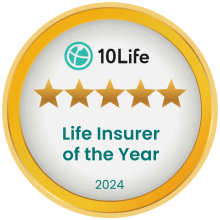Living in Hong Kong, we've seen our fair share of economic ups and downs. One thing that's always been a constant is the relentless march of inflation, the silent thief that gradually eats away at the value of our money. It's frustrating.
How to decode a nutrition label
"Low-fat". "Whole-grain". "Reduced-sodium". "Low-cholesterol". Confused by nutrition labels? Here's how to read between the lines.

Why fat-free doesn't mean no fat
Some of the most eye-catching nutrition buzzwords must meet specific regulations mandated by the health department. You can trust that behind every mention of "low" or "free" there has been a process to evaluate whether or not a food meets those standards. But while such claims are a good place to start, they don't tell you the whole story.
Here are a few of the most common catchphrases manufacturers use on food – and how to look past the hype:
- Fat-free.This doesn't mean the food contains absolutely no fat. But for a product to claim to be "free" of something, it must contain an amount so small that it would be considered nutritionally insignificant. Word of caution: What some fat-free products lack in fat, they make up for in sugars, and sugar-free products can be loaded with fat.
- Zero trans-fat. The ideal intake of this artery-clogging fat is zero. But products that say no trans-fat can actually contain less than 0.5g per serving, meaning there is some in there. For example, popcorn can be an excellent source of fibre, is a whole grain, and can be low in calories. But if you eat several cups of microwave popcorn, the trans-fat can really add up. Be sure to check for ingredients such as hydrogenated oils or shortening, which mean trans-fat is still present.
- Cholesterol-free. Unfortunately, cholesterol-free doesn't mean literally no cholesterol. According to the Canadian Food Inspection Agency (CFIA), cholesterol-free products must contain less than 2 mg per serving, while low-cholesterol products must contain 20 mg or less per serving. Foods that say reduced or less cholesterol need to have at least 25% less than comparable products. The Heart and Stroke Foundation recommends healthy people consume less than 300 mg of cholesterol daily (200 mg for people with heart disease or diabetes).
- Organic. The CFIA says a product labelled "made with organic ingredients" must have at least 70% organic ingredients. Keep in mind that organic is not synonymous with healthy. Organic food can still be packed with fat, calories and sugar.
- Multigrain. Look for the words "whole grain" or "100% whole wheat" on packages of bread or crackers. Whole grains (including oats, brown rice, barley or popcorn) have more fibre and other nutrients than refined grains, which have had their healthiest portions stripped away. Multigrain just means the ingredients include more than one kind of grain. Also, beware of darker breads: Some get their colour from molasses or caramel and are no healthier than refined white bread.
Paula Kehoe, February 09, 2017, How to decode the nutrition label. Retrieved from Canada Sun Life Corporate Website read the article
Information provided above is for reference only, please refer to the Conditions of Use of this site.

PH4%20-%203%20Money%20Strategies%20To%20Be%20Inflation%20Proof-1%20(1).jpg)
MY7%20-%20How%20To%20Be%20Happy%20In%20Difficult%20Times%205%20More%20Habits%20To%20Practice-1.jpg)

